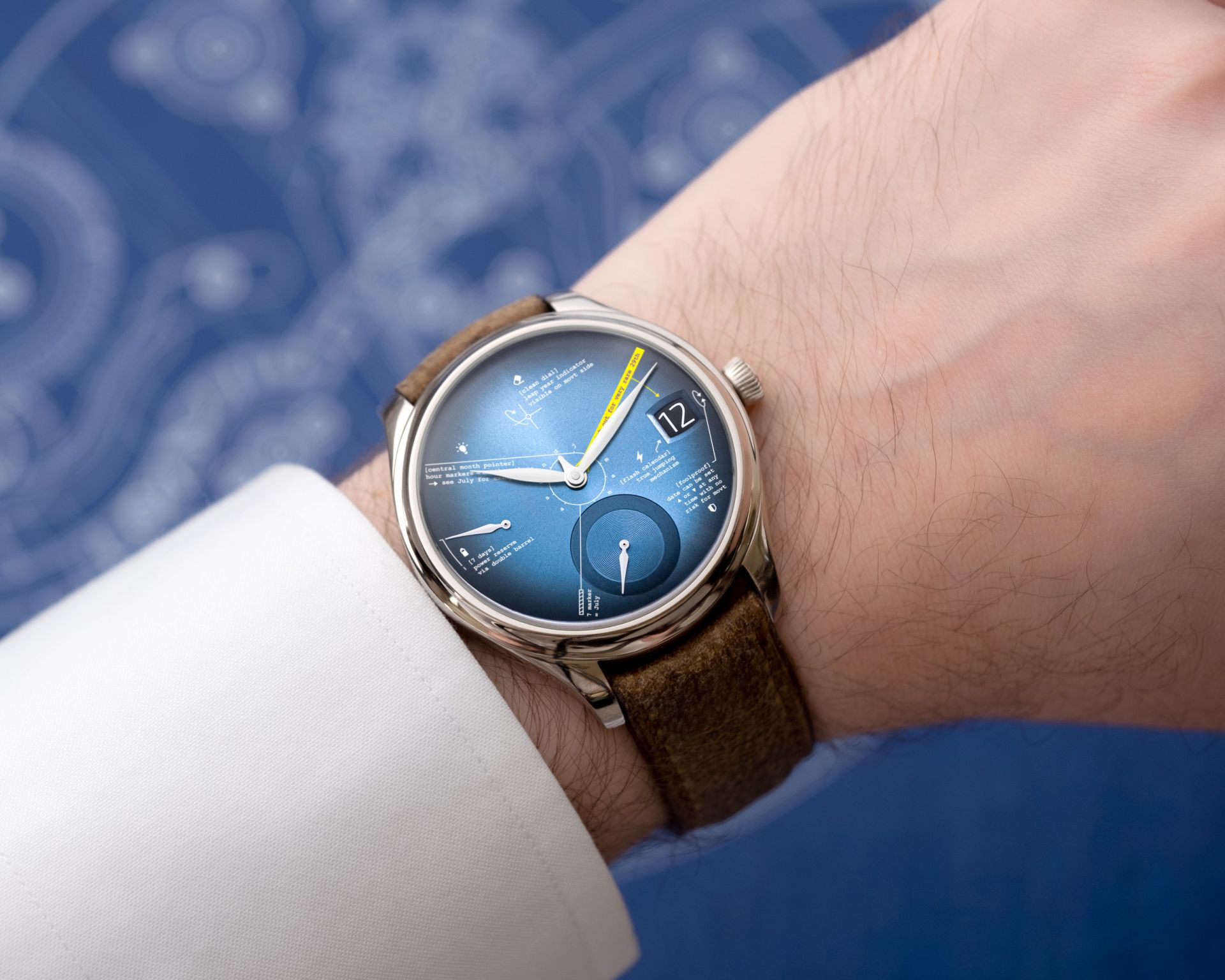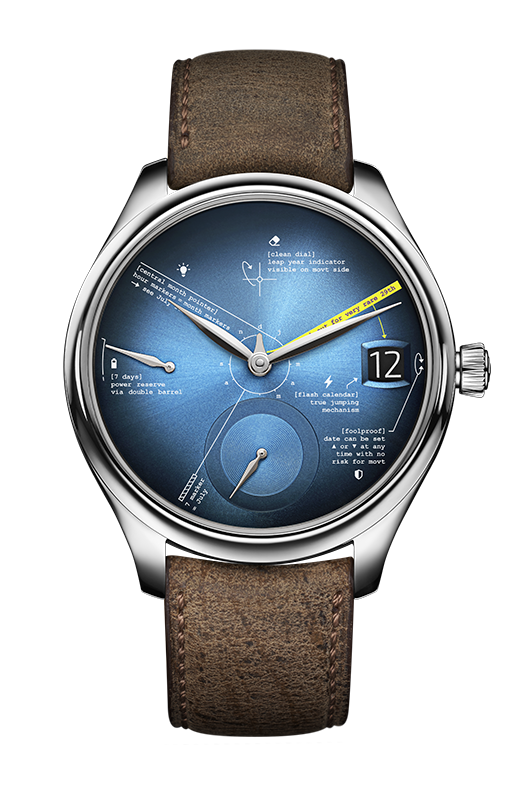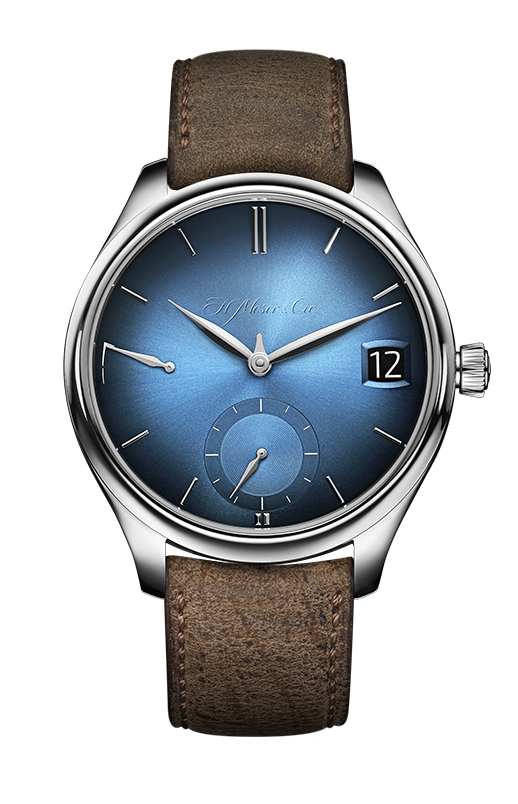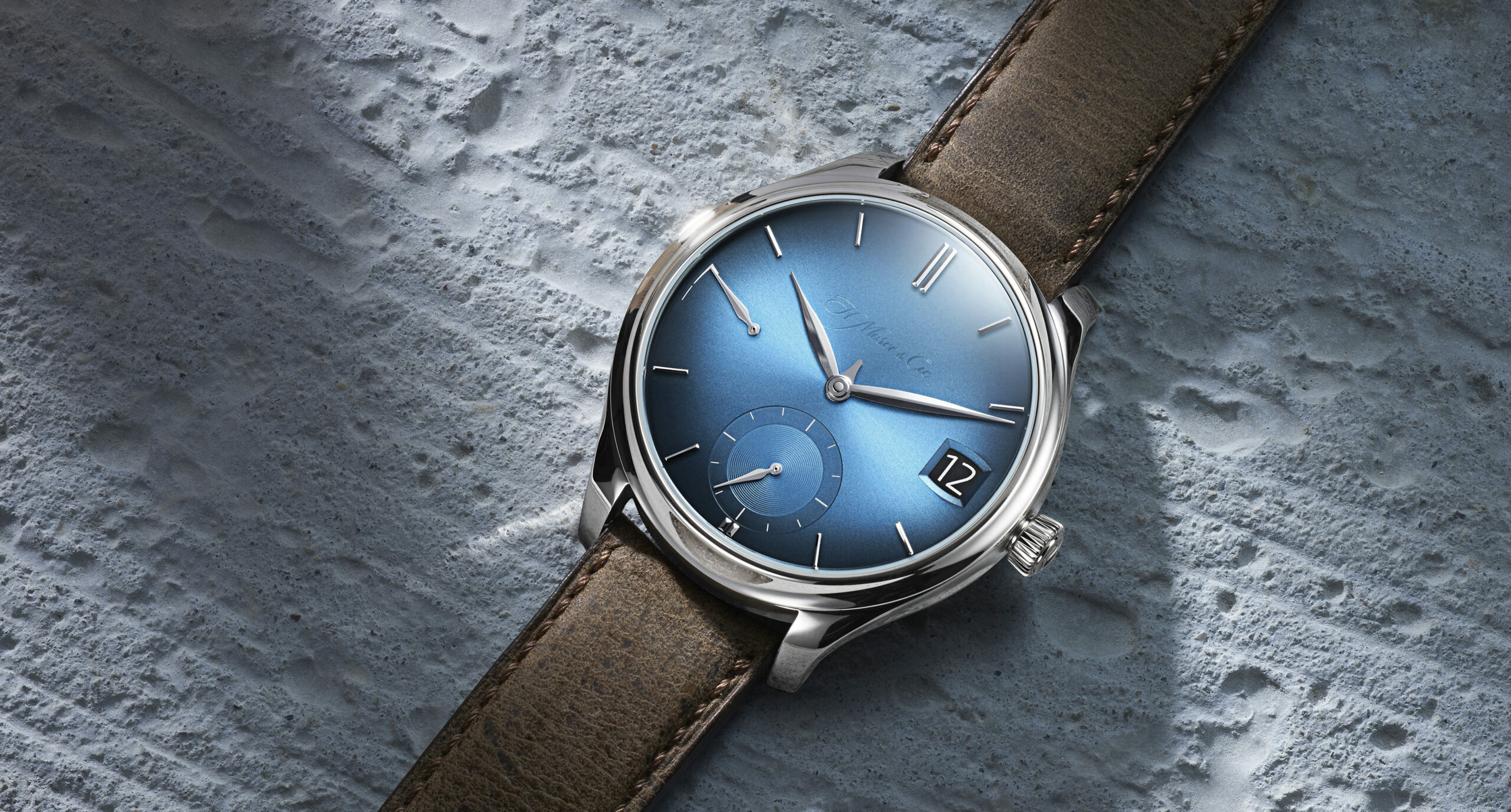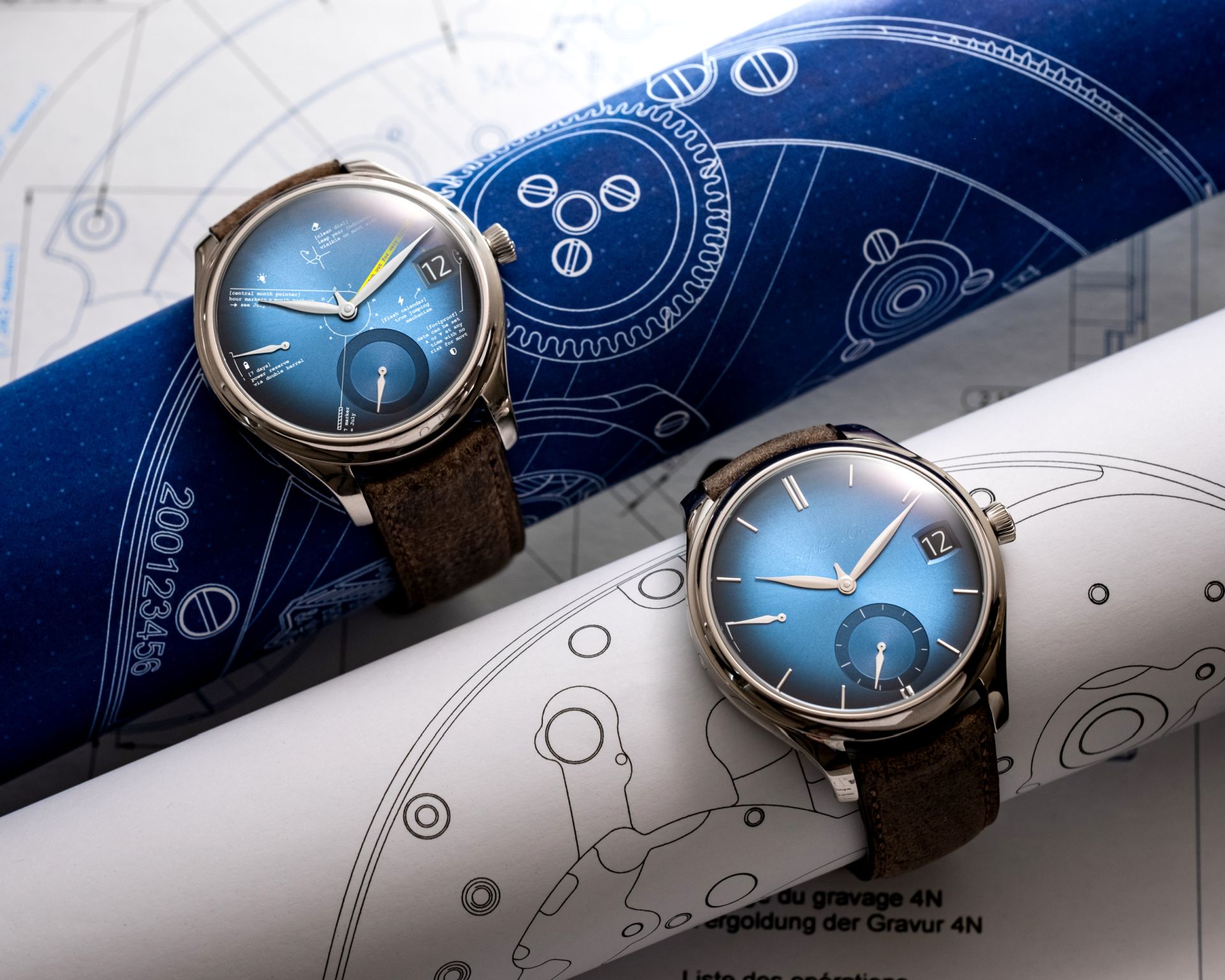BY ERIK SLAVEN
H. Moser & Cie is one of those independent Swiss brands that just does things its own way. Sophisticated, high-end and positively funky – that word is even in the name of this new pair of perpetual calendars. The brand takes an unusual approach to this advanced complication, embracing a minimalist setup that’s also very simple to use. This design language first appeared in 2015 with the original Endeavour Perpetual Calendar Funky Blue and it set a new direction for the brand aesthetically. The latest 2022 models come with and without cliff notes as high-end horology can also be fun, and no one does fun quite like Moser.
The brand is known for dials so spartan that indices and dial print are often nowhere to be found, including its own logo. Moser has also embraced Vantablack dials that quite literally use the darkest artificial substance on earth. Talk about nothingness. The dials on these two models do have some cool visual elements, but for perpetual calendars, they’re unusually bare. The standard dial simply looks like a time and date piece with small seconds, but another very small (third) central hand uses the hour indices to display the month – 12 o’clock is December, 1 o’clock is January, etc. A big date window at 3 o’clock adds some zing, while a power reserve indicator at 9 o’clock is so subtle it can almost be mistaken as an applied index at first glance. There aren’t a complicated series of sub-dials or strict rules to set the perpetual calendar. The date can be set at any time without risk of damage and has a “Flash Calendar” function that instantly changes the date at midnight. The 2015 model had dial print, a larger arrowhead calendar hand and busier power reserve indicator. Only the logo is included on the dial this time, and barely. Instead of solid print, it’s applied with transparent lacquer like a fancy watermark. Moser does its own thing.
The Tutorial model takes the opposite approach, scattering little descriptions or “cliff notes” throughout the dial in a busy way. Every function has a written explanation, kind of like a cheat sheet for its plain brother and it reinforces Moser’s sense of humor. A yellow strip stretching from the center to about 2 o’clock also reminds you to watch for the rare 29th of February (once every four years).
Both dials have polished leaf-shaped hands and the sunburst fumé blue becomes almost black at the perimeter. The blueprint-looking Endeavour Perpetual Calendar Funky Blue Tutorial is the one I’d choose hands down. If you’re going to go funky, go all the way.
The 18k white gold case is typically large for Moser at 42mm in diameter with a thickness of 11.9mm. It has brushed and polished elements, and there are curved sapphire crystals front and back. The signed crown screws down, but water resistance is curiously only 30 meters. Best not to swim with this one. Seen from the exhibition case back, there’s a leap year indicator on the movement via a stylized star wheel.
Powering both models is the in-house, hand-wound HMC 800 caliber. It has 32 jewels, beats at a relatively low 18,000vph with a full seven-day power reserve using twin barrels. It also features Moser’s interchangeable escapement with Straumann hairspring and the pallet fork and escapement wheel are gold. It’s decorated with Côtes de Genève and everything is meticulously hand-finished. Functions include central hours and minutes, small seconds, power reserve, perpetual calendar via small central hand and big date, and leap year indicator (on back of movement). It’s an amazing display of haute horology.
The watches come with a beige hand-stitched kudu leather strap with an 18k white gold buckle. The standard model (ref. 1800-0204) retails for CHF 54,000, while the Tutorial variant (ref. 1800-0205) is limited to just 20 pieces and retails for CHF 59,000. For that kind of Mercedes money, I’d again go with the cheat sheet dial.
Visit H. Moser & Cie here.



